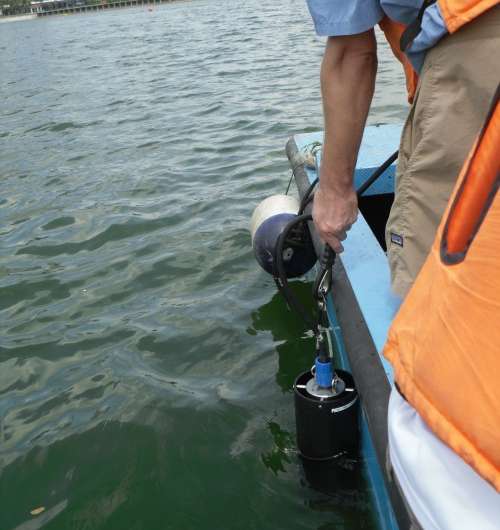Environmental monitoring to surge via potential super sensors

Super-sensors powered by superior gallium nitride will soon be going where no sensors have gone before, according to a Western Australian researcher.
Turbo-charged gallium nitride (GaN)-based chips have unlocked the key for UWA Professor Giacinta Parish and colleagues from the School of Electrical, Electronic and Computer Engineering and School of Chemistry and Biochemistry to develop an array of chemical sensors for in-situ industrial and environmental monitoring.
Prof Parish and her colleagues Professor Brett Nener and Murray Baker, along with their collaborator Dr Matt Myers from CSIRO, have developed a single sensor chip that can detect different ions without a fragile and bulky reference electrode, enabling users to use accurate, fast sensors in the field rather than the laboratory.
GaN is superior to traditional semiconductor materials such as silicon and gallium arsenide, due to its capability to withstand extreme heat and power levels, Prof Parish says.
"GaN is also opening up new high-power and high-voltage applications where efficiency is key in rapidly expanding areas such as hybrid vehicles, solar inverters and wireless base-stations," she says.
Prof Parish says others had previously investigated GaN-based sensors, but had failed to investigate the operation of the sensor without a reference electrode.

"These high performance sensors—which could also have wireless connectivity integrated on-chip—have applications in water recycling, industrial wastewater, and environmental waters," she says.
"For the latter, for example, there is a need to monitor for raised nitrate levels which cause algae blooms.
"If you can have sensors through the entire water system, rather than sampling at specific points and then having to remove those samples and test them in the laboratory, this enables a more a effective real time monitoring of critical water quality characteristics such as heavy metal ion content, nitrate content, or pH," she says.
Environmental consultant Jason Antenucci has pushedthe development of the sensors from an industry perspective with a need for an extremely robust and lightweight sensing device to be used in marine and freshwater environments.
Dr Antenucci has been working in consultation with Prof Parish and her team at length about the type of sensors that were needed for environmental sensing in a 'big data' world of large-scale water system monitoring.
"The GaN sensors will for the first time allow us to test water quality broadly and cheaply in the form of nutrients and heavy metals," Dr Antenucci says.
These type of functions in the past have notoriously been very expensive for environmental agencies such as Environmental Protection Authority, Water Corporation, Department of Water and others, Dr Antenucci says.
Provided by Science Network WA
This article first appeared on ScienceNetwork Western Australia a science news website based at Scitech.



















